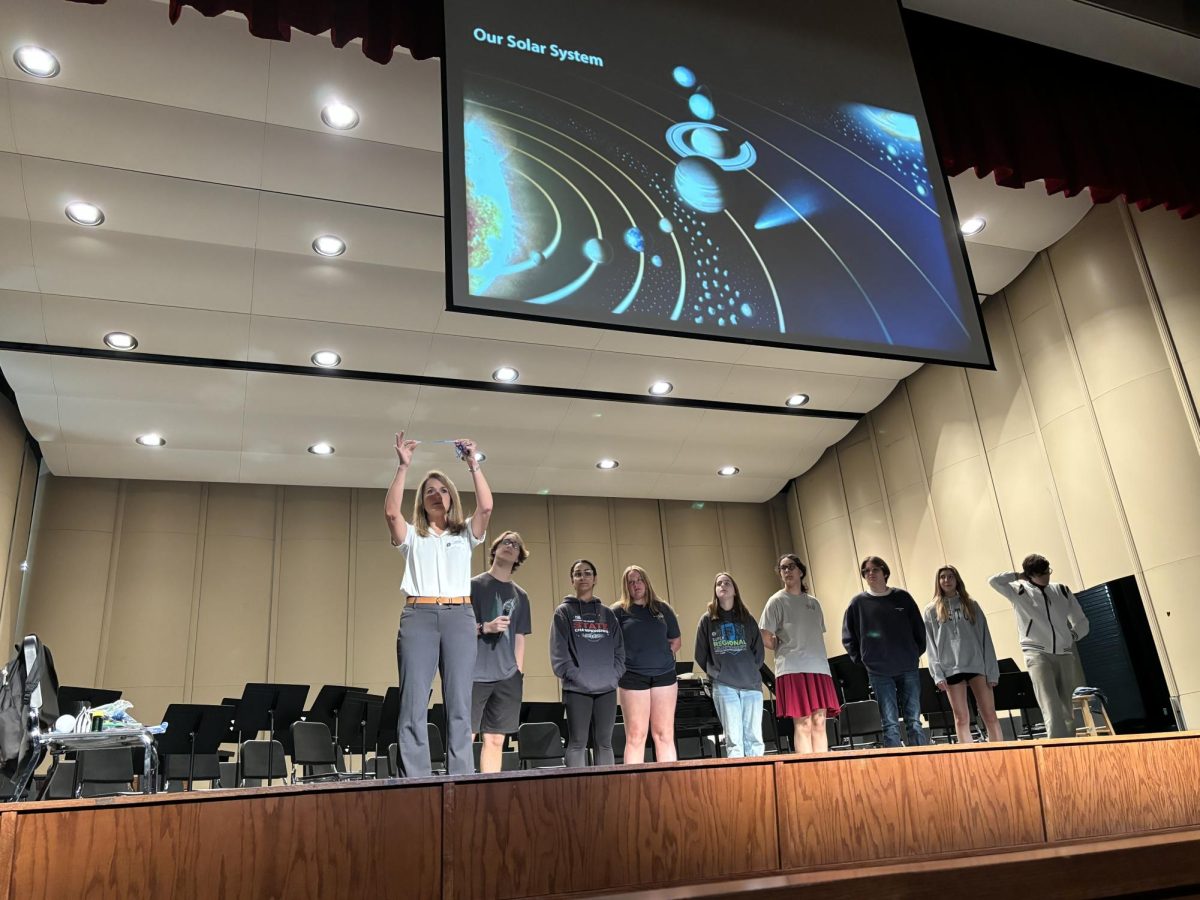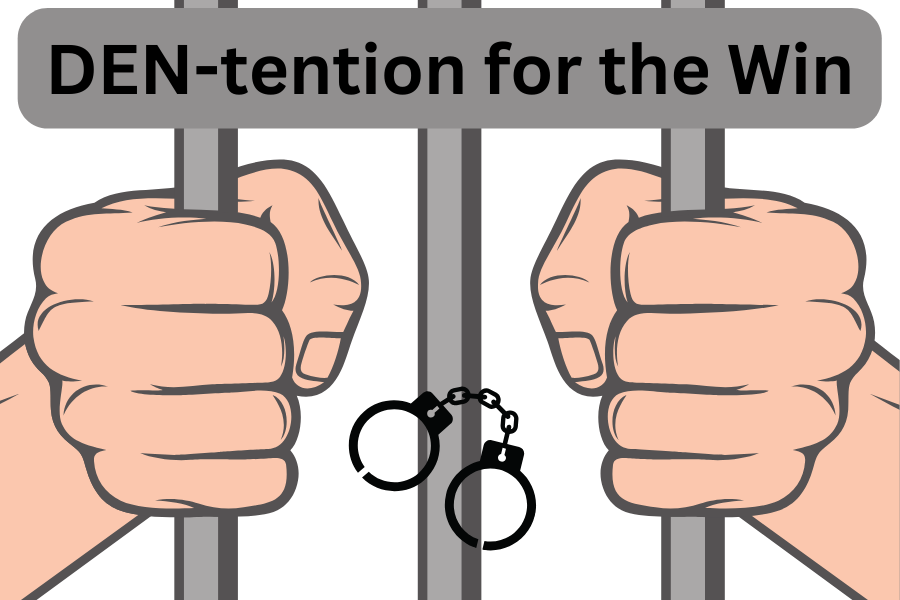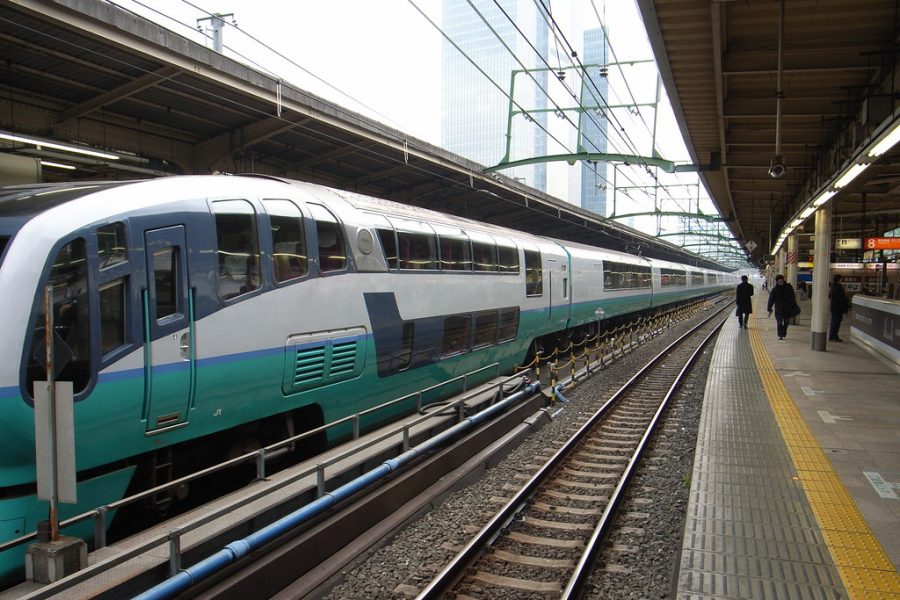The Case for Railway
Why Cars Aren’t Going To Cut It
Photo by Koji Haruna on Creative Commons
Trains are the way to ensure a cleaner, more efficient transportation system for the future.
April 14, 2021
On March 31, President Joe Biden announced a $2 trillion infrastructure plan that included $165 billion allocated towards modernizing public transportation and expanding American passenger and freight networks. The change is expected to decrease congestion, control pollution and bring much-needed economic investment to American cities located next to the rail.
The plan drew a large amount of discussion, from Republican lawmakers in Washington D.C. who are wary of the scope to advocates of rail who say it is a crucial upgrade to the country’s lagging infrastructure. However, when an impartial view is used to analyze the pros and cons, the case is clear that improving rail transportation will only bring benefits to the productivity and environment of the entire nation. Here are some reasons why.
Trains Have a Smaller Carbon Footprint Than Cars
Transportation is an undeniable hurdle to cross as the fight against climate change becomes more and more urgent. According to Our World in Data, one-fifth of all CO2 emissions come from it, and as higher populations create demand for transportation it will cause a large increase in these statistics. With that being said, when the data from the same resource is broken down, it is seen that a disproportionate 74.5% of CO2 emissions come from road vehicles like cars, trucks and buses. In comparison, rail makes up 1%, less than even aviation and shipping which come at 11.6% and 10.6% respectively.
One retort for this point is that trains do not exist in as high a quantity as road vehicles, so of course they would represent a smaller percentage. After all, in 2018 Amtrak served around 31.7 million passengers while in 2015, it was seen that more than 220,000 vehicles drove in I-35 everyday, which means over 80 million people a year. But, according to The Conversation, passenger rail is actually three times more efficient than a car. Even if electric cars were added to the picture, an electric train would still be more efficient and cause less of an adverse effect on global warming.
Highways are Flawed
Most high schoolers are in the process getting a driver’s license. Here’s an image that will resonate with you all very soon: it’s about 90 degrees in Austin in the summertime, and you’re driving on I-35. It’s hot, the sun is glaring through the windshield and air conditioning can only do so much to stop the beads of sweat rolling down your face and back. When you’ve finally had enough of the weather, 20 more minutes are added to the experience by a familiar struggle: traffic jams.
Congestion is an infamously frequent issue encountered on I-35. But similar problems are found from the East to West Coast, from NYC to Los Angeles, and all big cities in between. Proposed solutions often include increasing the number of lanes. However, according to Wired, this will only provide more demand as cars pour in and cause more congestion. From taxing congested parts of the highway to encouraging carpooling, most fixes brought forward are paper-thin bandages that fail to or inadequately address the deeper issue of demand: no matter what, the option most Americans have access to are cars, and as long as that remains the case, they will congest the highway.
It Supports the Economy of Large and Small Cities Alike
It works in both directions: when large cities are provided with a steady source of workers, it supports their industries and thus their economy. When small cities are connected to these larger cities, it means their pool of skilled and talented workers now have an easy route of access to these large industries, bringing back income and population growth to them as well.
In cities like New York City, most connections to external labor are already through public transit. As one of the richest megacities in the world, 82% of their out-of-county workers in the borough of Manhattan use public transit, and 50% of commuters use the subway.
So, what if the whole of America was connected like this? That is what Amtrak has proposed. If this railway was implemented, people could now travel between swaths of the Pacific Northwest, California, the South, Southwest, Midwest, Northeast and Mid-Atlantic states with ease. Imagine the benefit it would bring to implement a nationwide system similar to the one that connects NYC.
Investment into railways would likely help the public transport system as a whole. Transportation is an essential service for everyone, and if the trip to your high school was provided by a high-speed train that also carried workers and students going to Austin, Leander, or Round Rock, it would relieve the burden on schools who pay for buses and the parents that drop you off.




![Walking through the tunnel created by the cheerleaders and Celebrities, senior Frances Tran smiles as the soccer team is sent off during DEN for their playoff game against Rouse tonight. Tran said the wins against Smithson Valley and Alamo Heights gave the team a morale boost to take on the Raiders tonight. “I know we were not 100% confident in those games,” Tran said. “But, Rouse is a big opponent for sure. We’re definitely going into tonight with a lot of morale [because of the previous wins].”](https://cphswolfpack.com/wp-content/uploads/2024/04/frances-tran.jpg)



![Holding a bucket of materials in one hand and a roll of tape in another, anatomy and biology teacher Tyler Terry prepares for a lab. Terry said his proudest moments are when his students are happy to see him. “When I take my wife to a football game or something and a bunch of students want to say hi to me or they like to smile and wave and it just makes me feel good that the students are really kind and supportive of me,” Terry said. “[I’m also] proud when I see students perform really well in their extracurriculars because I can see how hard they’re working in my classes, [so] when I see that they’re also working so hard in other things. Like they’re winning band competitions or they’re getting awards for their theater productions, or I see them put on their choir shows, that’s like, wow, you guys are incredible.”](https://cphswolfpack.com/wp-content/uploads/2024/04/Rags-6.png)



![Catching a ball, junior Alivia Robinson plays at the Cedar Park vs Glenn game. Having played since she was 5 years old, she is dedicated to softball and has committed to UTPB for softball. “When I got my offer it took me a very long time to decide where,” Robinson said. “Softball has always been my dream for college, and UTPB is my fit. When [I committed] I knew I was going to be loved and supported.”](https://cphswolfpack.com/wp-content/uploads/2024/04/Lilly-Adams-3.13aliviaedit-901.jpg)































![Holding her dog, Nova, senior Ariana Balakrishnan poses for her senior pictures while Nova wears a bandana with her college decision. Balakrishnan applied to 18 colleges in total, but she decided on Columbia in the end. “Right before I clicked the button to open Columbia’s letter, I literally looked at the camera and go ‘This is just gonna really suck because I wanted it so bad,’ and I clicked it and all of a sudden you hear trumpets,” Balakrishnan said. “There’s a video that plays when you open it and I actually didn’t watch the video, I just watched the screen go black, because every day of December before ED [Early Decision] I would go on YouTube and watch the acceptance video to manifest it, so immediately when the screen went black, I started screaming and jumping up and down. And my parents in the video are like ‘What are you doing, where’s the letter,’ and I was just screaming ‘I got in, I got in.” I just started crying, and it just felt like everything in the world came together.”](https://cphswolfpack.com/wp-content/uploads/2023/04/ariana-2-300x217.jpg)


![Catching a ball, junior Alivia Robinson plays at the Cedar Park vs Glenn game. Having played since she was 5 years old, she is dedicated to softball and has committed to UTPB for softball. “When I got my offer it took me a very long time to decide where,” Robinson said. “Softball has always been my dream for college, and UTPB is my fit. When [I committed] I knew I was going to be loved and supported.”](https://cphswolfpack.com/wp-content/uploads/2024/04/Lilly-Adams-3.13aliviaedit-901-600x400.jpg)




